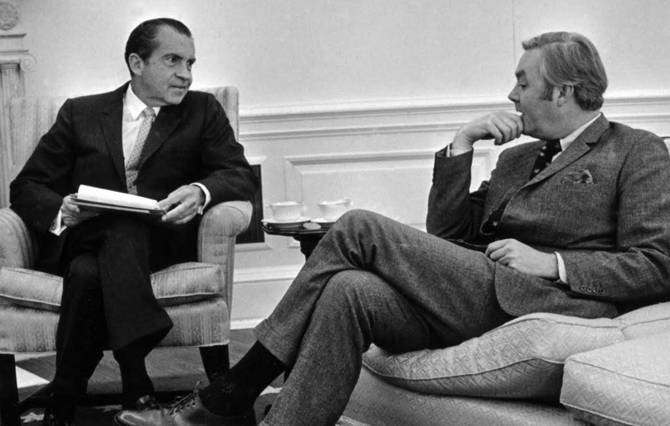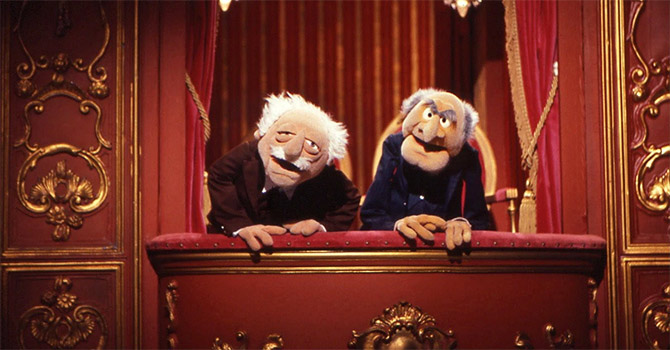Most of us find ourselves working for bosses with whom we disagree at some point. Typically, this happens when a boss who recruited us moves up or out and one who “knew not Joseph” comes.
Such a situation is a stark reminder that most of the time we exercise leadership within constraints, be they boss, budget, board, grant or calendar.
Is it possible to stay on the job and get important things done within such constraints?
Stephen Hess’ new book, “The Professor and the President,” tells the story of young Harvard professor Daniel Patrick Moynihan’s work as Richard Nixon’s key adviser in developing urban policy in the first two years of Nixon’s administration. As a young adult, Hess was an aide to Eisenhower and occasionally worked for Nixon. He became friends with Moynihan and believes that he was the only person to know both Nixon and Moynihan prior to 1968. Hess served as Moynihan’s White House deputy in 1969.
The idea of Moynihan working for Nixon seems crazy.
Moynihan worked in the Kennedy and Johnson administrations and helped develop key proposals for Johnson’s “War on Poverty.” He was opposed to the war in Vietnam and was a major advocate for radical welfare reform. Nixon disliked Harvard and campaigned on greatly reducing almost every program that Moynihan had helped create.
Nearly 50 years later, I am tempted to point to the duo as a way of calling for conservatives and liberals to work together. However, Nixon and Moynihan don’t fit neatly into today’s political categories.
I am more interested in why Moynihan would agree to work for Nixon. How did they work together in ways that allowed Nixon to regard Moynihan as a valued and loyal White House staffer and Moynihan to accomplish his agenda in public policy?
Moynihan was motivated to give this arrangement a try because he was on the outside with key Democrats. In the mid-1960s, Moynihan had written a government report on African-American families that was highly criticized. As a result, he could not get a hearing on his ideas for welfare reform. Choosing to work with Nixon’s administration was a bold and controversial move.
Hess believes Moynihan sensed that Nixon wanted to make changes in welfare but did not have a particular view about what needed to change. This blank slate gave Moynihan the room he needed to develop some new ideas. The arrangement helped Nixon, too -- he had barely won the White House, and recruiting a Democrat to his staff made him look cooperative.
But seeing how each could use the other is not a good foundation for trust. Having worked in the New York governor’s office and two presidential administrations, Moynihan knew that his ability to influence policy depended on the president’s trusting him. The president had other advisers with longer relationships and more loyalty to the party. Moynihan needed to frame the issues in a way that Nixon was completely comfortable with and that improved the situation of Americans living in cities.
From Hess’ account, Moynihan gained trust by consistently engaging in the following practices:
· Have fun. Moynihan had a delightful sense of humor. Most of Nixon’s White House staff was very serious. Moynihan’s sense of fun allowed him to defuse situations and make the work more interesting while also juggling conflict. The president and senior advisers enjoyed talking with Moynihan. Humor put people at ease and allowed Moynihan to make serious arguments and stay in relationship with those whose first response was to disagree.
· Do the work. Moynihan understood his role as a policy adviser on the White House staff. The main work was convening meetings and writing memos. He developed agendas for meetings that were interesting, thereby convincing the president, who hated meetings, to chair them. The meetings were vehicles by which he got the attention of cabinet secretaries, who had little access to the president and therefore also wanted to attend the meetings. Similarly, Moynihan wrote memos to the president that were carefully researched and clearly actionable. Nixon frequently distributed Moynihan’s memos to cabinet secretaries and senior White House staff both for the content and as examples of the kind of briefing that Nixon found helpful.
· Shift mindsets at every opportunity. Nixon enjoyed talking with Moynihan so much that he asked Moynihan about books he should be reading. The professor carefully curated a reading list that would expand Nixon’s thinking and capitalize on Nixon’s preferred genre, political biography.
· Fight with respect. Moynihan was not the senior policy adviser to the president. He engaged others in the administration with different views directly and with respect. He fought for his views as matters of policy, not personality or politics. He maintained open communication with key parties.
· Pull on the levers of change that allow progress over time. Given his previous government experience, Moynihan knew of key structures in the federal government that had blocked efforts for agencies to cooperate. Before there were any battles to fight over issues, he worked to remove those barriers.
· Choose battles. Moynihan determined the most important issues on which to focus that the president was most likely to support. He stayed focused on those things.
Moynihan’s work illustrates what business strategist Roger Martin calls “opposable thinking,” the ability to hold together ideas rather than simply choose between options. Moynihan chose to work with those who were his natural opponents in the hope that they could achieve together what neither “side” could achieve alone.
When I disagree with my boss, the board or the bishop, I tend to try to figure out a way to move on to a new job or assignment. What would it mean to work opposably with those with whom I disagree? What could I do that would be loyal to both my convictions and the institution?








